+ Provence Road Trip Itinerary Ideas to Create Car Travel Routes Around Provence (Including Lavender Fields, Scenic Villages & the Verdon Gorge Experience)
This post contains affiliate links to products and services, which help us earn a small commission at no extra cost to you. This helps to fund this blog and to bring more great publications to you.
The key to creating the perfect Provence road trip itinerary when traveling by car is selecting the right base. While the scenic French region boasts numerous sights worth seeing, the journey can easily turn into an exhausting driving marathon, leaving little time to explore historic villages, venture on scenic hikes, or sample the region’s famous cuisine and wine.
Drawing on our personal experience of two self-guided road trips to Provence, we thought we’d offer our insights on where to stay in Provence with a car. In addition to sharing our favorite base for car travelers, we’ll suggest a few alternative options and highlight some must-see sights in each area. We’ll also provide tips and suggestions on driving in Provence and offer some ideas about where to go in the region without a car. We hope our experience proves helpful as you plan your own trip.
Are you looking for a car to rent for your trip around Provence? Check some of the best deals available. Compare prices and book your car in advance to ensure that you have a stress-free experience.
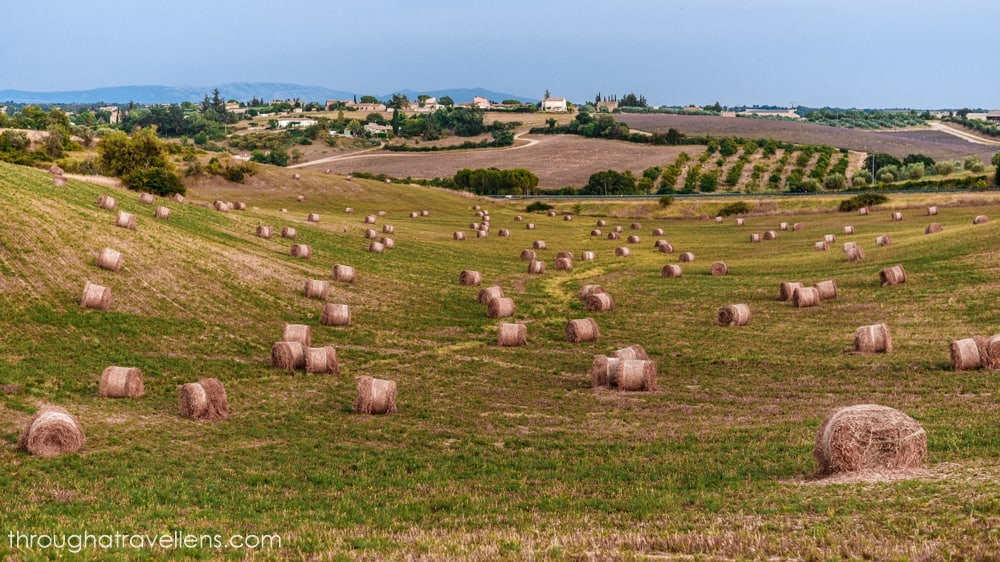
Provence Road Trip Itinerary: Things to Know and Things to Expect
Provence is a large and diverse region that stretches from the Rhone River in the west to the Italian border and south to the Mediterranean Sea. It encompasses various regions, including the scenic mountains of Haute Provence, the fragrant lavender fields of Valensole, and the stunning blue coastline of the French Riviera. While the region is worth exploring, it requires time and meticulous planning.
Sometimes, a more streamlined itinerary is better, depending on the local infrastructure. For example, Cote d’Azur has highways that connect the cities and allow for quick travel between stops. On the other hand, when exploring Haute Provence, Luberon Valley, and other regions, it makes more sense to take local roads because that’s where all of the scenic stops are. However, this also means taking lower speed limits, serpentine roads, and numerous roundabouts into consideration.
Despite the planning required, self-guided driving tours of Provence are undoubtedly worth the effort. Regardless of the route chosen, the scenery changes dramatically several times throughout the trip. You will find yourself driving through small, postcard-like centers of iconic villages and towns, through lavender fields, and mountain areas with ochre-colored hills and small trees. There will also be moments when you hold your breath and feel a sense of excitement on one of the many turns of the old serpentine Crete Road in the Verdon Gorge.
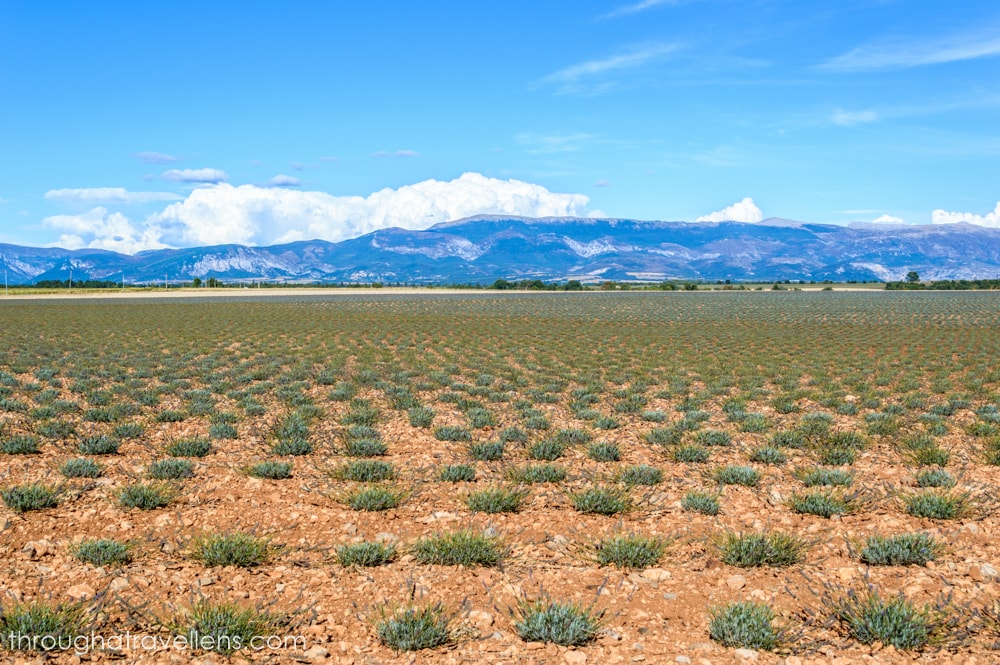
Where to Stay in Provence When Travelling by Car?
Deciding where to stay in Provence with a car can be a tricky question as it depends greatly on one’s travel style, budget, and time. There are two options for those wanting to make the most out of their trip.
- For those with limited time who do not want to compromise on anything to see or do in Provence, it may be a good idea to drive through the region and stay in hotels and apartments in the towns and villages along the way.
- For slow travelers, it may work better to choose a base (or two) in Provence and take day trips by car. This allows for a balanced trip, with a day on the road, a day in town, then another day on the road, followed by another day in town, and so on.
There are several base towns that are known as the best places to stay in Provence when traveling by car, and these are Aix-en-Provence, Avignon, Marseille, and any of the big cities on the Cote d’Azur.
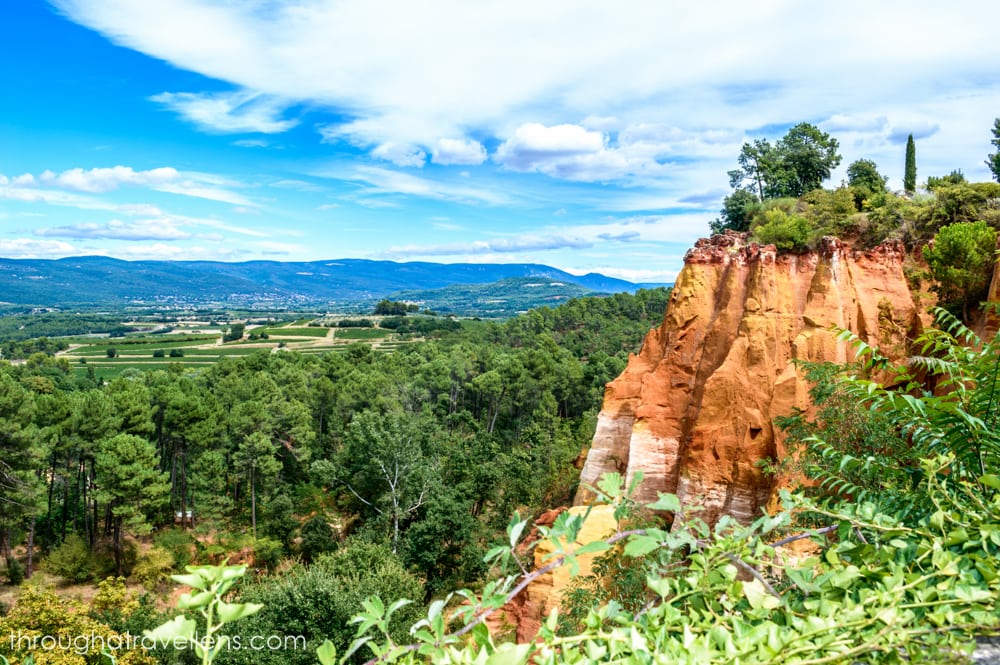
Table of Contents
Where to Base in Provence? Option 1: Aix-en-Provence
In our experience, the best base to stay in Provence with a car is Aix-en-Provence. This bustling yet charming town, located in the heart of the region, offers the perfect balance of good accommodations, things to do in town, and easy access in and out of Aix with minimal traffic.
Are you searching for accommodations in Aix-en-Provence? Browse through a selection of hotels and other available lodging options. Compare prices and make a reservation in advance to ensure a stress-free experience.
Driving in Aix-en-Provence is relatively stress-free, and there are plenty of places to park. Logistically, this location is also a convenient starting point for building circular road trips around Provence. Here are just a few examples of day trips by car from Aix-en-Provence:
Aix-en-Provence — Gordes — Abbaye de Senanque — Rousillon — Apt — back to Aix for dinner and a stroll down Cours Mirabeau.
Aix-en-Provence — Valensole — Verdon Gorge — Lake of Sainte-Croix — back to Aix for a glass of wine and delicious dinner.
Aix-en-Provence — Cote d’Azur — back to Aix to shop at the local fare.
Aix-en-Provence — Camargue — Calanques du Cassis — back to Aix to recharge.
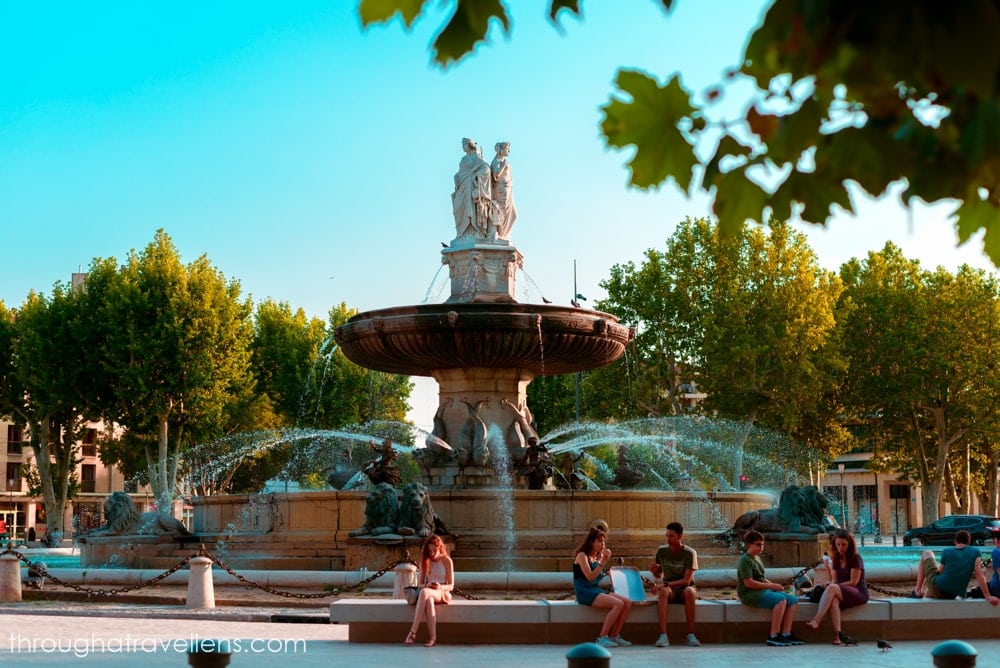
Note to travelers: the routes around the area of Haute Provence may include winding roads, roads through villages, and plenty of roundabouts. These factors will limit the speed, so it’s best to keep that in mind when planning your daily Provence travel itineraries. Less is more when it comes to exploring the region. However, one downside of choosing Aix is that parking can be expensive unless it is included as a bonus with rented accommodation. Another thing to keep in mind is that driving in the historic center is not allowed. So, the options are either to leave the car at the nearest parking area and carry bags/gear to the rented apartment or hotel or rent outside of the historic center.
Where to Base in Provence? Option 2: Avignon
For us, Avignon is a close second when it comes to choosing the best place to stay in Provence with a car. The good news is that choosing between these two locations is the type of decision where you can hardly go wrong. Both towns are old, historic, and simply beautiful, with a good selection of accommodations for different budgets and plenty of things to do. We discovered that Provence road trips, while exciting and filled with many great stops, can be exhausting when done for several days in a row. It’s nice to plan breaks between days behind the wheel and spend them wandering around the city. Avignon fits this agenda perfectly.
One thing to consider is that Avignon may experience heavier traffic within the city, especially during rush hour. Plus, Avignon is located about 90 km from Aix, slightly further inland. This adds approximately an hour of driving each way if you plan to explore destinations such as the Azure coast or the national parks of Verdon or Luberon. From this perspective, Aix might be a slightly more strategic choice.
Are you searching for accommodations in Avignon? Compare prices and make a reservation in advance to ensure a stress-free experience.
Where to Base in Provence? Option 3: Marseilles
The hub that we personally would not recommend when answering the question about the best base for Provence is Marseille. The city’s vibe is not our personal cup of tea for a holiday. Its intense traffic and the amount of time needed to get in and out of town were factors that tipped the scale in favor of Aix (plus, Aix is closer to Haute Provence — the region that we were curious to explore).
However, Marseille may be a good option for those prioritizing the Camargue and the Calanques, as well as those who want to visit the Cote d’Azur. The city also offers convenient connections to some places of interest by public transportation. This is always an advantage for anyone looking for the best place to stay in Provence without a car.
Explore day trips from Marseilles to some of the most popular destinations in Provence.
Where to Base in Provence? Option 4: Cote d’Azur
Finally, there is the Cote d’Azur and its popular locations: Nice, Monaco, Cannes, and Saint-Tropez. Choosing this region as a base to travel around Provence by car may not be the first option because the area is relatively far from many key attractions in the heart of the region. However, the Cote d’Azur itself is a wonderful destination with plenty to offer, including beautiful beaches, charming towns, and delicious cuisine.
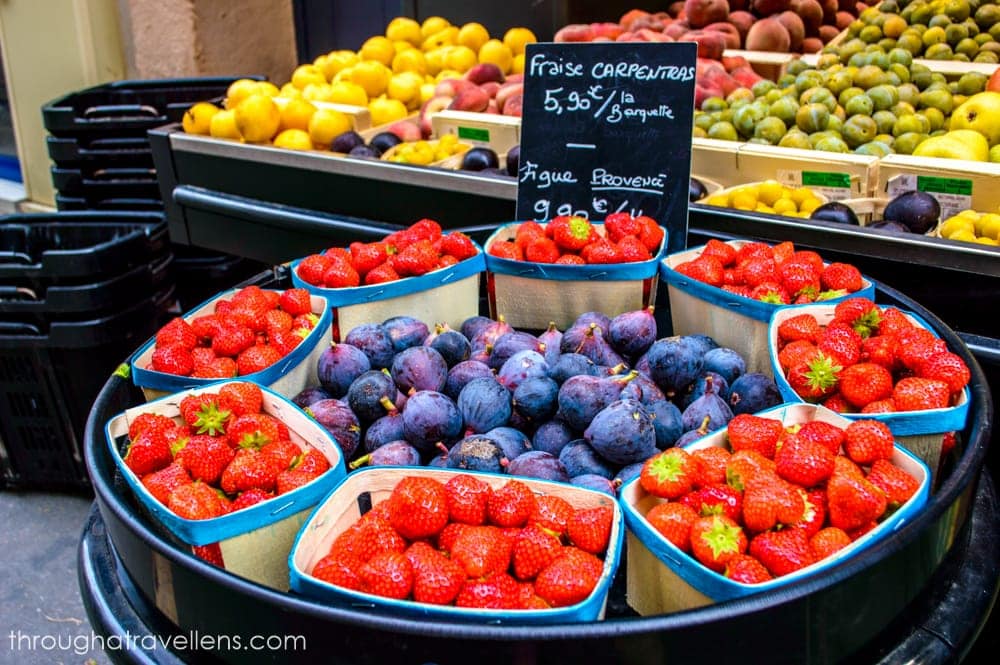
Additionally, it is a convenient base for exploring nearby areas such as Grasse, the Cascades de Clars, and the Verdon Natural Park. For travelers wondering where to stay in Provence without a car, the Cote d’Azur is a great option due to its extensive network of train lines that make it easy to travel between cities and towns. However, keep in mind that the train may not be the best way to explore the more remote areas of Provence, which are best accessed by car.
What to Do and See in Provence? The Road Trip Itinerary
Listed below are numerous suggestions for things to do and see in Provence. We have included the locations we explored, and this may serve as a nice illustration of how a road trip itinerary can work.
Day 1: Gordes, Senanque Abbey, Roussillon, Apt.
Day 2: Relaxing in Aix-en-Provence.
Day 3: Lavender Fields of Valensole, Verdon Gorges National Park.
As mentioned earlier in the post, less is more. We advise any newbie exploring Provence to pace themselves. It is helpful to jot down a few major attractions that will take some time to explore, but also be prepared for unplanned stops along the way because the region is truly beautiful, and a significant part of it is still under the radar.
Explore the Base: Aix-en-Provence
There are plenty of things to see and do in Aix-en-Provence. For starters, living in the downtown area means being able to take a lovely morning stroll to any of the local bakeries and pastry shops for some freshly baked pain au chocolat or croissants, and to enjoy a glass of great wine at any of the numerous local cafes. The town is also famous for its Cours Mirabeau – a central alley lined with plane trees. During the week, there are plenty of local vendors selling all things Provence – lavender-scented products, sweets, and souvenirs at Cours Mirabeau.

Aix-en-Provence is also known as the City of a Thousand Fountains. These fountains are scattered around the old town area. One of them, the Fontaine d’Albertas, is a central element of the Place d’Albertas and is a must-see when visiting Aix-en-Provence. This elegant square and its buildings were once the headquarters for the most influential aristocratic family in the area. Today, it is a place where locals enjoy their lunch, and many musicians come to play in the evening. Another lovely fountain not to miss is the Fontaine de la Rotonde. It is located in the heart of the city and marks the entrance to the old town. The fountain is surrounded by local shops, bakeries, and cafes.
Aix-en-Provence is a perfect town to explore on foot. Walk past the town hall and an old tower straight towards the Aix Cathedral. Wander among the small and cozy streets of the town or explore the local markets. If you are a foodie, these markets are a must-visit. Provence is known for its cantaloupes, candied fruits, herbs, calissons, and other products that are to die for.
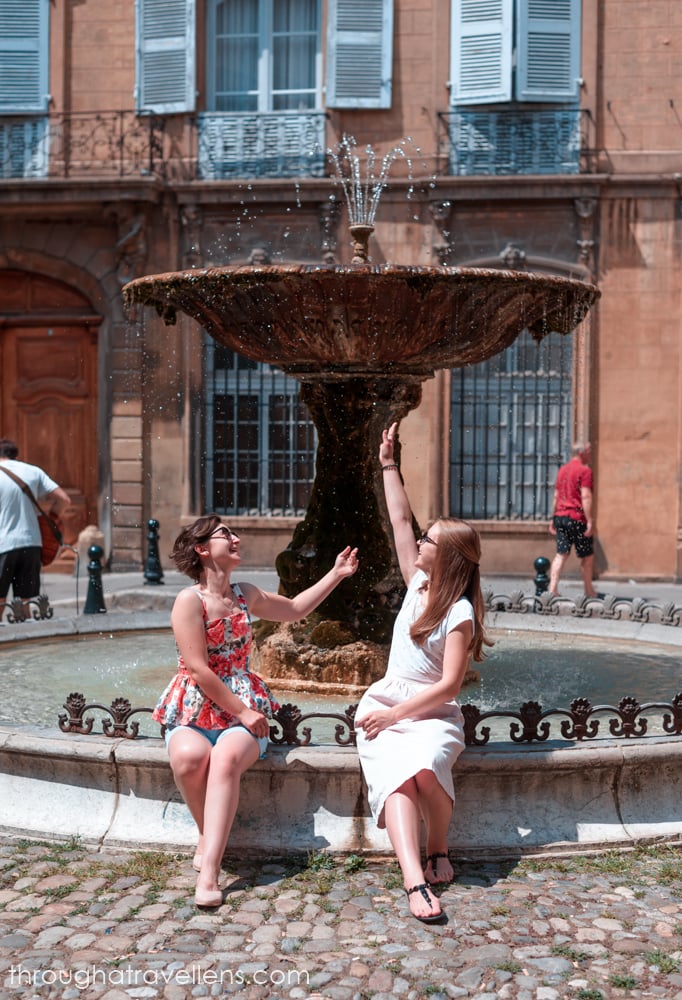
Marvel at the Panorama of Gordes
What to do and see in Gordes, France? There are two options: to either drive through the town and stop to enjoy the panorama – an option suitable for those who are on a tight schedule, or to actually check out the panorama, then drive into town, park the car, and explore Gordes on foot.

The town, though relatively small, has a lot to offer. You can explore the Tuesday market, visit the church, or simply walk the streets of this popular town and enjoy some lemonade in one of its cafes. If you come in the summer, we would definitely advise scheduling a visit to Gordes for either the morning or evening. It is a town on the hills, which means there is a lot of uphill walking. In the heat of the day, this can be quite a challenge. To see the panorama of Gordes, take the A8 highway to Cavaillon, and then the D15 route. As you approach the town, there is a convenient stop near Bel Air Rock.
Have Lunch Near Senanque Abbey
This is probably one of the most popular postcard views of Provence, and a trip to the Vaucluse region would be incomplete without it. We highly recommend putting it on your Provence road trip itinerary. Not far from Gordes, there is the secluded yet very popular Senanque Abbey. This is an active monastery with two lovely lavender fields and a cozy park with old trees that provide much-needed shade on the roads and hills.

The Abbey itself dates back to the 12th century. With time, it has adapted to the modern economy and is now not only a place of worship but also a business. Visitors are welcome to explore Abbaye de Senanque on a tour or to shop in the local gift shop. The shop sells local produce, including honey—the by-product of the lush lavender fields of the abbey.

One of the less popular things to do at the Senanque Abbey is to have lunch on one of the park’s hills. The ones closer to the parking lot are less inviting and can get quite dusty and crowded, but there are also several sweet spots closer to the abbey. For anyone wondering where on the Provence road trip itinerary might be a proper place to have lunch, consider this location and pack a picnic blanket and some food in the car.
Hike the Roussillon Ochre Trail
Located only 13 km (8 miles) from Gordes are the ochre cliffs of Roussillon. This is one of France’s most colorful hiking experiences. Just imagine former ochre deposits with orange trails winding among red, yellow, and orange cliffs, earth pillars, and hillocks.

There are two ways to explore the Ochre Trail or Le Sentier des Ocres: a shorter version that takes around 30 minutes, and a longer one that may take up to 60 minutes. Both hikes are fairly simple but require suitable footwear, a hat, a water bottle, sunscreen, and covered shoulders if you visit during the summer.
Keep in mind that during high season, the Roussillon Canyon can get crowded, with long lines at ticket desks and some traffic on the trail. I would not recommend wearing white shoes on this hike, and arriving early before 11 am may be the way to avoid the crowds and get some great pictures without other tourists in the background.

The ticket price for the Ochre Trail or Le Sentier des Ocres depends on whether you want to visit a conservatory afterward and will cost either under or above 5 Euros. In addition, there are plenty of great guided tours of Roussillon available. It is not hard to find parking (all paid) near the trail. After the hike, you can also explore the town. Although it may not have many historic attractions, it is a very authentic place suitable for walks.
Stop at Apt for Its Candied Fruits
Apt is located in close proximity to Roussillon and is another great stop on the Provence travel itinerary. This is a small Provencal town with an old square, a town hall, and charming cafes.
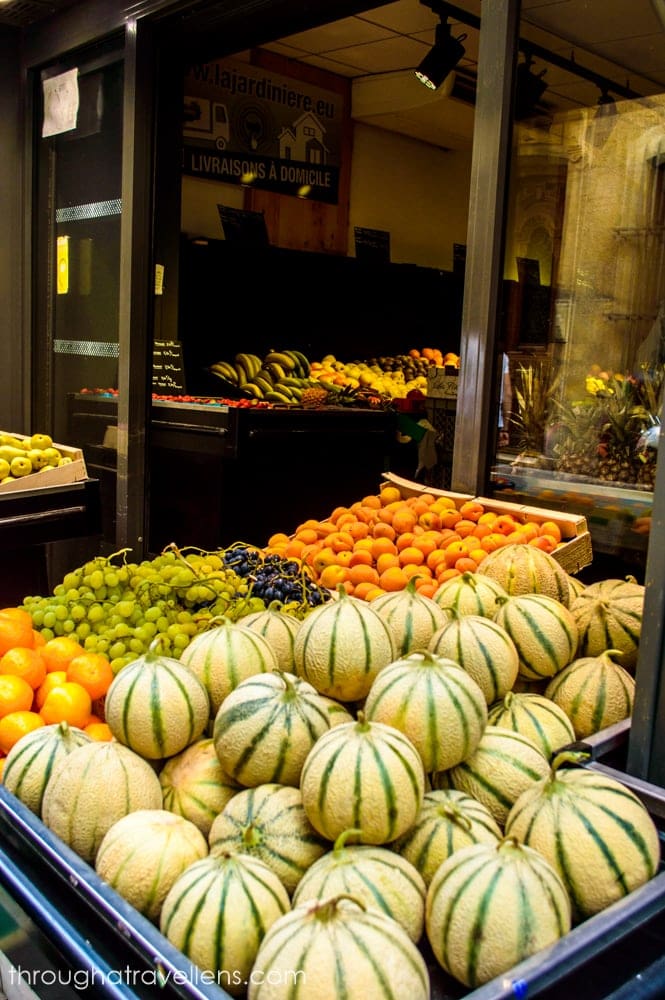
The town of Apt has a long history of candied fruit production, which dates back to the 14th century. In the 19th century, the town became the center of the candied fruit industry in France. Today, Apt is still home to several factories and shops producing and selling candied fruits.
Candied fruits are made by cooking fresh fruit in a sugar syrup until the fruit becomes saturated with sugar and the syrup is reduced to a thick, sweet glaze. The candied fruit can be eaten on its own as a snack or used as an ingredient in a variety of sweet dishes, such as cakes, tarts, and ice cream. If you’re interested in learning more about the history and production of candied fruits, you can visit the Musee de l’Aptesien, a small museum located in the heart of Apt. The museum features exhibits on the traditional crafts of the region, including candied fruit making.
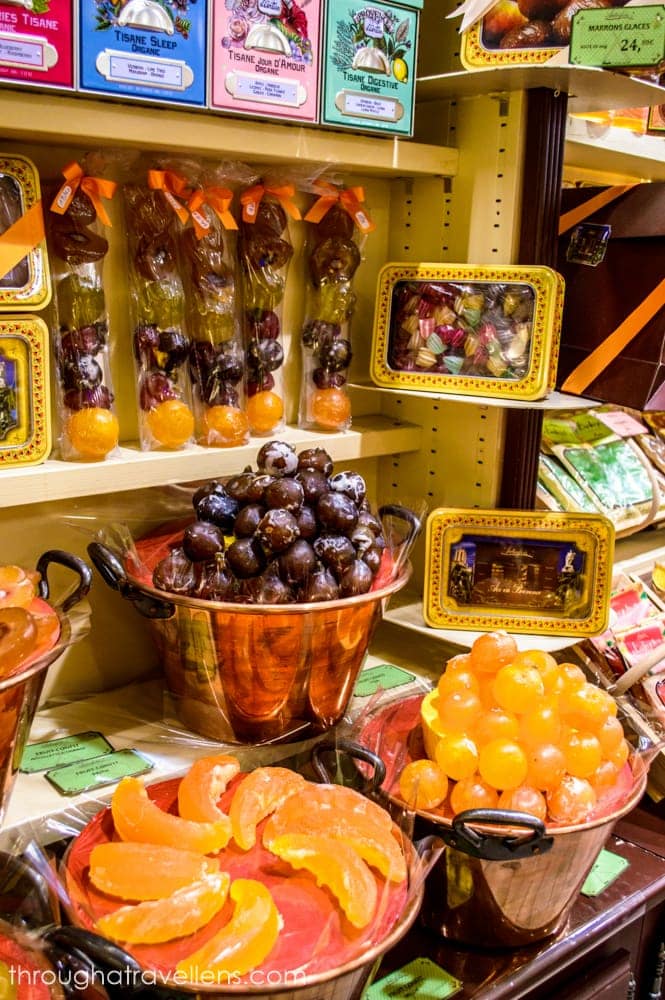
The process of turning fruits into candied ones involves submerging them in a sugar syrup boiled to 130°C (266°F), followed by cooling and repeating the process for several weeks or even months. When it comes to tasting candied fruits, similar to tasting cheeses, there are some recommendations to follow. It’s best to start with fruits that have delicate flavors, such as figs, cantaloupes, and apricots, and save stronger citrus flavors for last.
Enjoy the Lavender Fields of Valensole
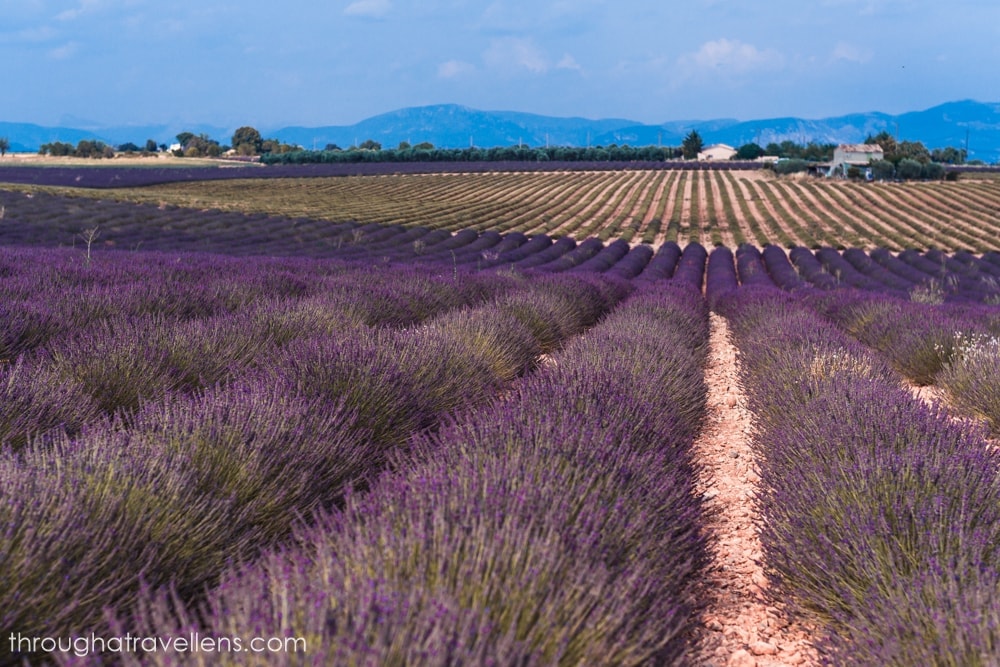
The best time for visiting the lavender fields in Provence is typically from late June to early August, but this can vary depending on weather and other factors. The Provence Department of Tourism offers an interactive map of the fields, which includes information on the regions where lavender is expected to be in bloom and directions to those areas. This can be a useful tool for planning your visit and ensuring that you get to see the lavender at its peak. Keep in mind that the lavender fields can get quite crowded during peak season, so it’s a good idea to plan your visit accordingly and try to arrive early in the morning or late in the day to avoid the crowds.
Check out the exciting tours to the lavender fields of Valensole.
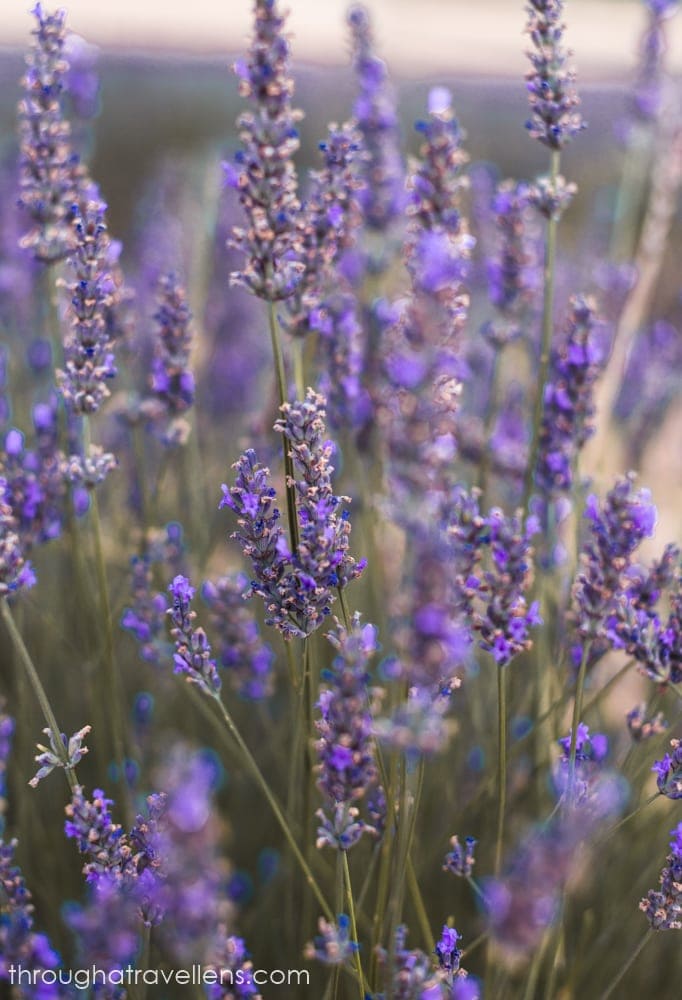
If you want to avoid crowds, it’s a good idea to visit the lavender fields before mid-July. One of the best fields is located between the villages of Saul and Mont Ventoux. Without a doubt, Valensole is the top spot to see lavender in Provence in July.
In addition to taking pictures of the fields, you can also book a visit to a lavender distillery, which is a great way to meet local growers. Another good idea is to stay in a hotel in the village and spend the night in close proximity to the fields and their indescribable aroma. Although the area is challenging to reach by public transportation, travelers visiting Provence without a car can still enjoy an immersive lavender experience by booking one of the many lavender tours available throughout the summer.
Relax by the Lac du Sainte-Croix
The lake is nestled between the cliffs of Gorges du Verdon, the deepest gorge in France, and it is an absolute natural wonder of Provence. Spending multiple days in this location alone is a must-do road trip itinerary that includes camping in the park, swimming in the clear blue waters of the lake, driving the breathtaking Route de Cretes, and having dinner at Moustier Sainte Marie.
As you approach the Regional Natural Park of Verdon, the vast lake with its clear blue water becomes hard to miss. Two parking lots are available near the lake. The free one is on the upper road, though it’s slightly inconvenient as you’ll need to walk up and down the road to reach your car. The second option is a paid parking lot located right by the lake.
The inviting lake offers plenty of opportunities to swim, relax under the shade of old big trees, and rent a boat or catamaran. The small town of Sainte-Croix has many food options for visitors to stop and enjoy.

Hold Your Breath at the Verdon Gorge
A road trip through the Verdon Gorge is a drive to remember. Gorges du Verdon, and especially its Crete Route is one of the most beautiful serpentine roads ever. It slowly climbs up, leaving one breathless and speechless at each of the turns, as the road opens mesmerizing panoramas.
Upon reaching the top of the Crete Route in the Verdon Gorge, you will be rewarded with a breathtaking view of the Grand Canyon of France. The river valley below is home to the Verdon River, which has stubbornly carved its way through the mountains over millions of years. As you stand at the top, you’ll be able to enjoy a panoramic view of this natural wonder and appreciate the stunning beauty of the surrounding landscape.
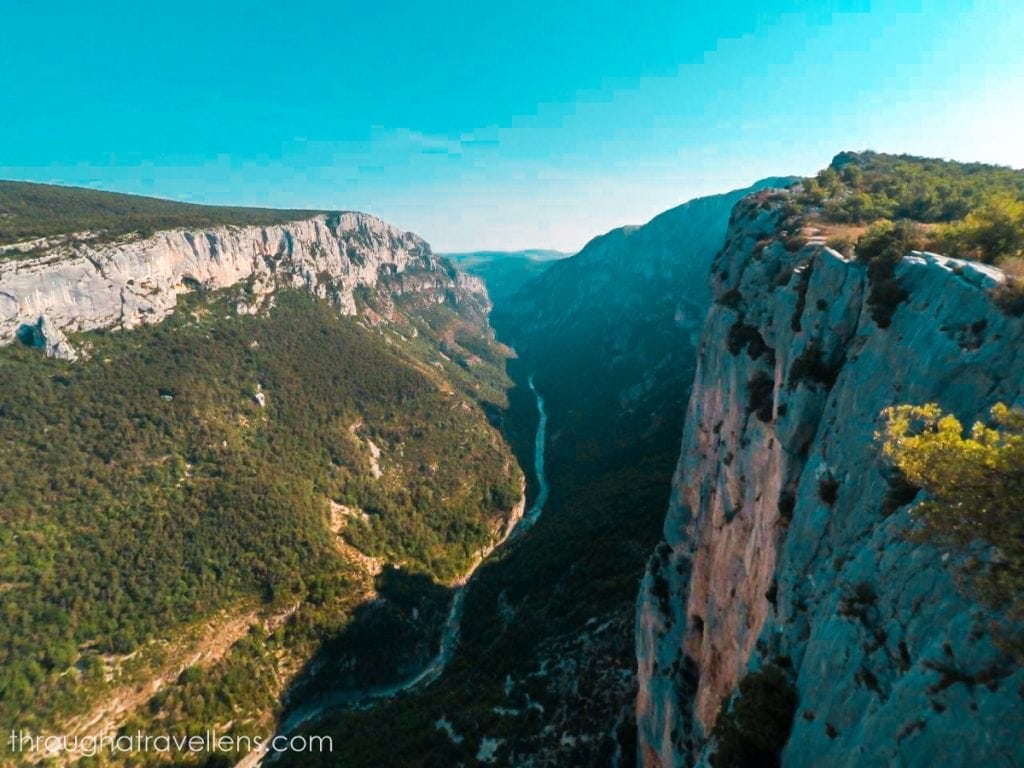
The route is open to campers, motorbikes, and hikers. You can either drive through the gorge or take the circular Route des Cretes, an old road that leads to panoramic views. To access the Route des Cretes, turn onto the D23 from the D952 road. However, the road requires skilled driving as it is steep, narrow, and often lacks side barriers.

For those seeking an adrenaline rush, the Verdon Gorge offers a range of outdoor activities such as hiking, rock climbing, kayaking, and rafting. The canyon is a popular destination for rock climbers, with over 1,500 climbing routes available. Kayaking and rafting enthusiasts can explore the Verdon River and its rapids, which range from Class II to Class IV.
Whether you’re an adventure seeker or just want to take in stunning natural beauty, the Verdon Gorge is a must-see attraction in Provence.
Road Trip through Provence: What Else to Visit?
Provence is a gift that keeps on giving, and there are lots of other noteworthy stops that, if included on the itinerary, won’t be a disappointment! Here are just a few other ideas on what to visit or do in Provence:
- Spend the night at Moustiers Sainte-Marie. Dubbed the most picturesque village of Provence, it is hidden in close proximity to Gorges du Verdon. If you include all of these or most of these stops into your Provence travel itinerary for the day, by the time you reach the Verdon area, it will already be rather late. Spending the night (and the next day) at Moustiers Sainte-Marie may be a good idea. Nature with its cliffs, torrents, rivers, and cascades makes the most of the village’s scenery. This is a perfect place to stay in the heart of Provence.
- Explore the South-West of Provence and the famous Calanques National Park – a series of picturesque rocky cliffs and bays. However, with Calanques, timing is everything as access to them may be restricted during the hot summer months. This stop includes a rather long hike from the parking lot to the seaside, and, for the safety of tourists, local authorities sometimes prohibit visits.
- Immerse yourself in the nature of Camargue, a unique region known for its horses, flamingos, and pink salt lakes. Similar to Calanques, access to Camargue may be somewhat restricted during the summer months. Stop by Cassis, praised by many travelers for its picturesque promenade by the water, cozy cafes, and overall atmosphere.
- Other honorary mentions among popular Provencal towns are Avignon and its castle, and Nimes and its Jardins de la Fontaine and Pont du Gard.
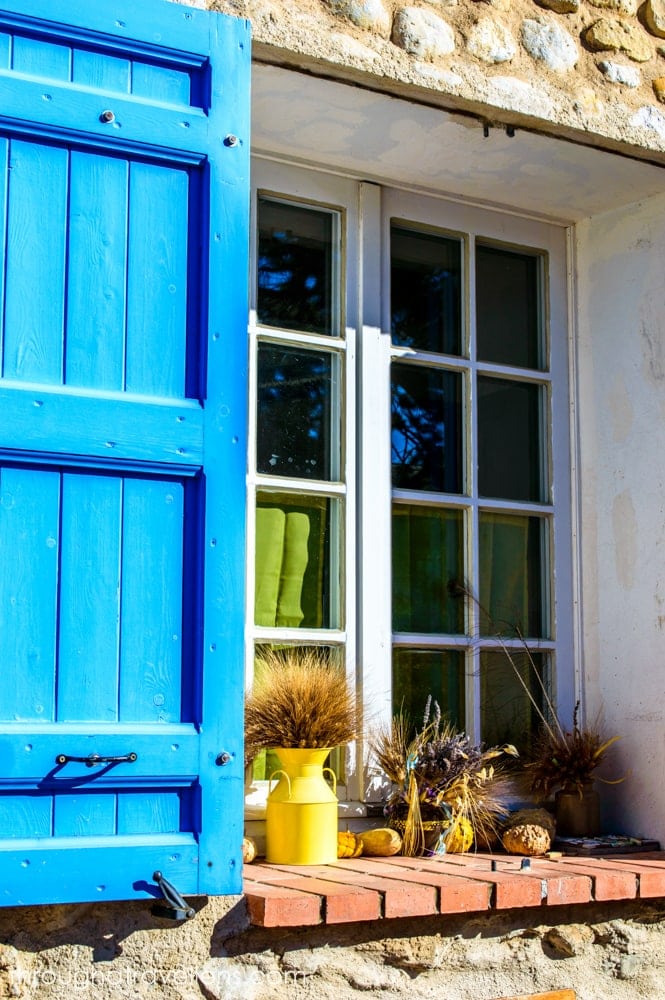
What to Do in Provence when on a road trip? FAQ
Aix-en-Provence vs. Avignon? Which town is the best to stay in?
This really depends on many factors, and I cannot be completely objective as my personal experience only covers life in Aix. My information about Avignon is based on research and feedback from other travelers. However, there are numerous online comments praising Avignon for being a better base due to the larger number of attractions to see, better housing, and logistics.
I personally am considering renting a place in Avignon for my upcoming trip in autumn, on a mission to explore Marseilles-Calanques-Camargue. I will then share my observations and update this section.
Is traveling in Provence by car the only option?
It is challenging to explore this area adequately without renting a car. While there are local regular buses available, such as the one from Avignon to Pont du Gard in Nimes, they do not drive through some of the lovely villages. This is true for the rest of the regular bus routes as well. It always involves a compromise. Private tours can be a solution. However, I would also appreciate it very much if any of you could share your personal experience of exploring Provence without renting a car. This would be useful for the traveling community.
What is the best season to visit Provence?
The best seasons to visit Provence are between May and June, as well as between mid-August and mid-October, when the weather is very welcoming. If you have Calanques or Camargue on your wishlist, this is also the ideal time to visit. However, if you want to see the lavender in full bloom, you’ll need to be ready to take some heat as the flowers are at their fullest from the end of June until the end of July.
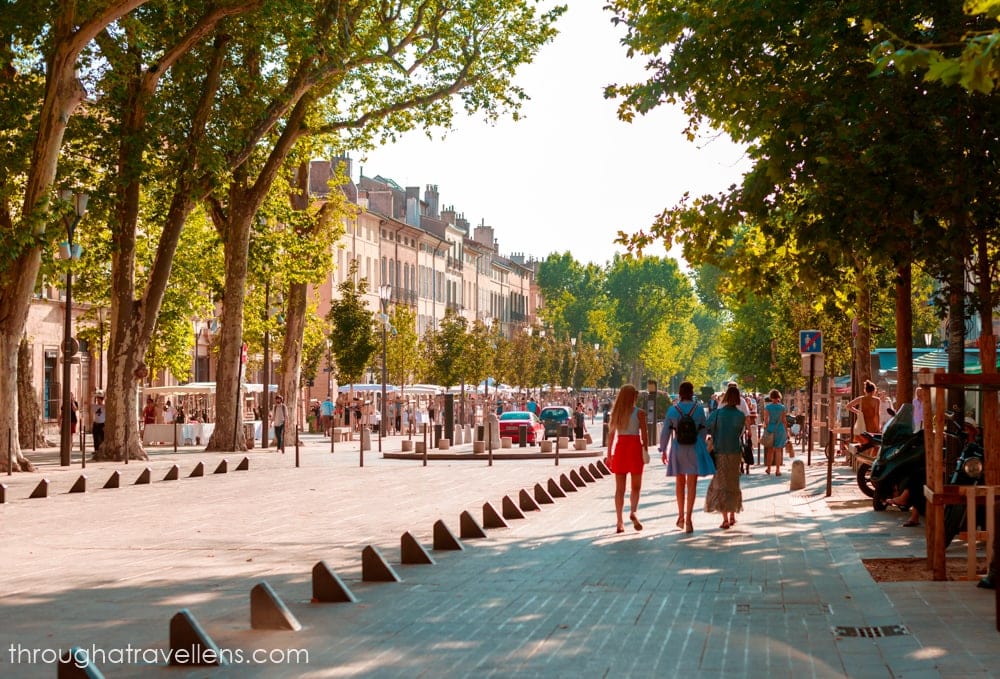
Where to stay in Provence without a car?
If you’re looking for a place to stay in Provence without a car, it’s best to look for accommodations in larger towns or cities that have good public transportation connections. Here are some options to consider:
- Avignon – Avignon is a popular destination in Provence and has a train station and good public transportation connections. It’s also a great base for exploring nearby attractions like the Pont du Gard and the Luberon region.
- Aix-en-Provence – Aix-en-Provence is a charming university town that has good public transportation connections to other parts of Provence. It’s also a great place to explore on foot, with plenty of pedestrian-friendly streets, markets, and cafes.
- Marseille – Marseille is a bustling port city with good public transportation connections to other parts of Provence. It’s also home to some great museums, historic sites, and restaurants.
- Arles – Arles is a small town in the heart of Provence that has a rich Roman history and plenty of historic sites to explore. It’s also well-connected to other parts of Provence by public transportation.
- Saint-Remy-de-Provence – Saint-Remy-de-Provence is a small town that’s known for its art galleries, markets, and historic sites. It’s also well-connected to other parts of Provence by public transportation.
Keep in mind that public transportation in Provence can be limited, especially in more rural areas. It’s also worth noting that while these towns are well-connected by public transportation, some of the smaller villages and attractions may require a car to reach them.
Is it hard driving in Provence?
Driving in Provence can be challenging for some people, especially if they are not used to narrow roads, tight turns, and steep inclines. Additionally, some roads in the region can be narrow, and parking can be limited in certain areas, especially in popular tourist spots. However, many people enjoy driving in Provence and find it a great way to explore the region’s beautiful scenery and charming towns. It’s important to be cautious and alert while driving, especially on winding roads and in busy areas. If you’re not comfortable driving, you can also consider other transportation options such as buses, trains, and private tours.

Written by Inessa Rezanova
I am a Kyiv-based screenwriter with 10+ years of experience in producing scripts. I love my job, and no, I did not quit it to travel the world. I see different countries in my spare time. As a storyteller, I believe that it is the emotional journey that matters the most. This is why together with my sister I started this blog to encourage everyone to travel and to do so with a heart and mind opened to adventures.

Images by Natalie Rezanova
I am a photographer based in Kyiv, Ukraine. I am lucky to be able to do what I love the most for a living. Photography is an endless source of inspiration for me. My mission on this blog is to inspire by sharing some of the favorite captions from my journeys. I also provide professional photography tips to help the readers bring home some beautiful photo memories.


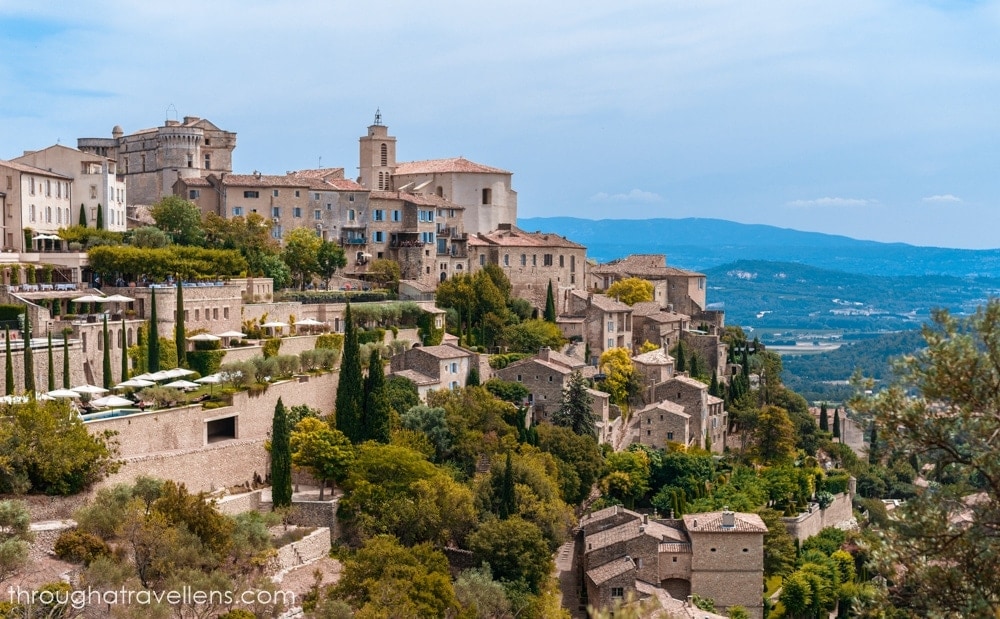
You write such substantial articles! SO much information and terrific photos, thank you!
Thank you for your kind words, Amy!
So I never really put the Lavender fields on the Bucket List Project. Dont get me wrong, they always look beautiful in pictures but I cant imagine wanting to travel just to see them. Now that Verdon Gorge is definitely bucket list worthy to me. That along with hiking the Roussillion Canyon to see the amazing landscape and ultimately hike up to get those views! I guess I am more of an outdoorsman if I head to Provence by car! Was the Lac du Sainte-Croix cold? Can you go swimming there?
Hi Eric. Thank you for your comment, it is always great to compare the way we all feel about what we can refer to as bucket-list destinations! The lake was not cold at all. I would say, it was refreshing. Especially if travelling to Provence in summer, when it is hot, the lake becomes such a rewarding stop on the route. We went swimming, but I also saw people kayaking from the river of Vintgar Gorge (another possible activity to add to that list of things to try). There is a clean beach by the lake, and also a camping site.
Pingback: Nice in France in Winter: The Ultimate Guide (Itinerary for 2 Days)
Pingback: French Riviera in December ➤ Itinerary Ideas for 5 to 7 Days